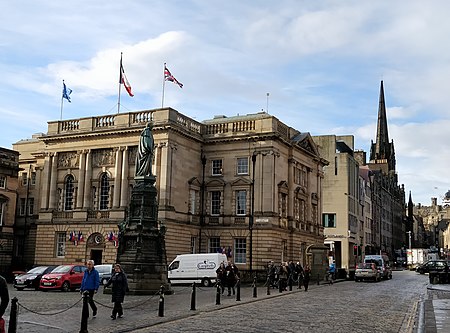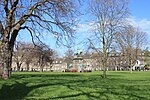French Institute for Scotland
Cultural organisations based in ScotlandFrance–Scotland relationsOrganisations based in EdinburghWikipedia references cleanup from March 2012

The French Institute (French: Institut français) in Edinburgh is a cultural centre promoting French language and French culture in Edinburgh and in Scotland and part of the wider Institut Français network around the world. It operates alongside the Institut français du Royaume-Uni in London and is administered by the French Foreign Ministry. It is co-located with Edinburgh's French consulate on the city's Royal Mile. The Institute itself comprises a cultural department, a courses department and a media library. It also hosts the Education officer for Scotland.
Excerpt from the Wikipedia article French Institute for Scotland (License: CC BY-SA 3.0, Authors, Images).French Institute for Scotland
Randolph Crescent, City of Edinburgh New Town/Broughton
Geographical coordinates (GPS) Address Nearby Places Show on map
Geographical coordinates (GPS)
| Latitude | Longitude |
|---|---|
| N 55.95233 ° | E -3.21231 ° |
Address
Randolph Crescent 13
EH3 7TT City of Edinburgh, New Town/Broughton
Scotland, United Kingdom
Open on Google Maps










